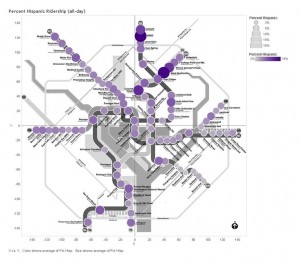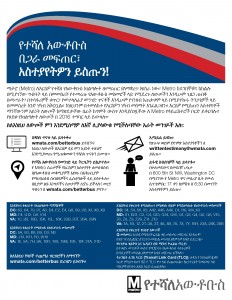Fostering and Sustaining an Inclusive Dialogue – In Everything We Do
Metro’s award-winning Public Participation Plan (PPP) helps us be strategic in our efforts to engage minority, low income and limited English proficient (LEP) populations in transit planning and programming activities. Here’s how we work to produce successful results.
One of the very first things we do when a project begins is to develop a Project Communications and Outreach Plan – or PCOP for short. Our dedicated External Relations (EREL) team meets with the Metro “project sponsor” and other stakeholders to understand the parameters of the project, identify the type of outreach needed, and put a schedule of activities in place. In the past year since we adopted our PPP, it has become clear that no one PCOP is the same as another and no one strategy meets the needs of every project.
What we mean by being strategic
At the beginning of any project, EREL brings in the Planning office to help identify the demographics of riders impacted by projects. Sometimes, as with the annual budget, the project affects the entire system. Other projects can be more limited in scope – like a joint development project, where only a geographic subset of customers are affected. In any case, Metro’s planners use data from passenger surveys (rail and/or bus) and Census/American Communities Survey (ACS) to help identify the characteristics of the affected riders and where to find them, as meeting people where they are is often the best way to engage them.

Hispanic rider origins
For example, data collected for our 2012 Rail Passenger Survey shows us stations from where our Hispanic populations tend to originate their travel. When conducting outreach at these stations in particular, we know we must have Spanish-speaking staff on hand to answer questions/explain material and ensure that we have any surveys or other printed material also available in Spanish.
For our most recent Metrobus State of Good Operations (SOGO) service change package, we used demographic data from our most recent bus passenger survey to help us identify minority and low income riders who would be impacted by the changes. We focused additional efforts on the riders whose routes were proposed for elimination, as these would have the most significant impacts.
We also used ACS language data to understand where there were impacted riders who spoke languages other than English or Spanish. There were significant Amharic and Vietnamese language populations affected, so surveys and materials were made available in those languages as well.
How well does the strategy work?

Amharic printed materials for the 2015 Bus SOGO outreach
To measure how well we reach our minority, low income and language communities, we compare the demographics of affected riders to the demographics of those who provided us comments. For the 2015 Bus SOGO package, we determined that the 81 original service proposals impacted about 14,000 daily trips. Riders most adversely affected by the proposals (such as route eliminations and route splitting) were 76% minority and 48% low income. Through our outreach efforts, we received about 7,000 comments. Of those, 45% were from minority riders – 10% of whom identified as Hispanic – and 13% were from low income riders.
While these results show room for improvement, they are encouraging. Internally, we have already conducted a debrief of our approach and made recommendations for improvements. Performance measurement for public engagement is not always easy to quantify, but we think we’ve got an approach that will lead to successfully getting more voices into the conversation about Metro.
What are some other ways we can engage our customers?


Recent Comments